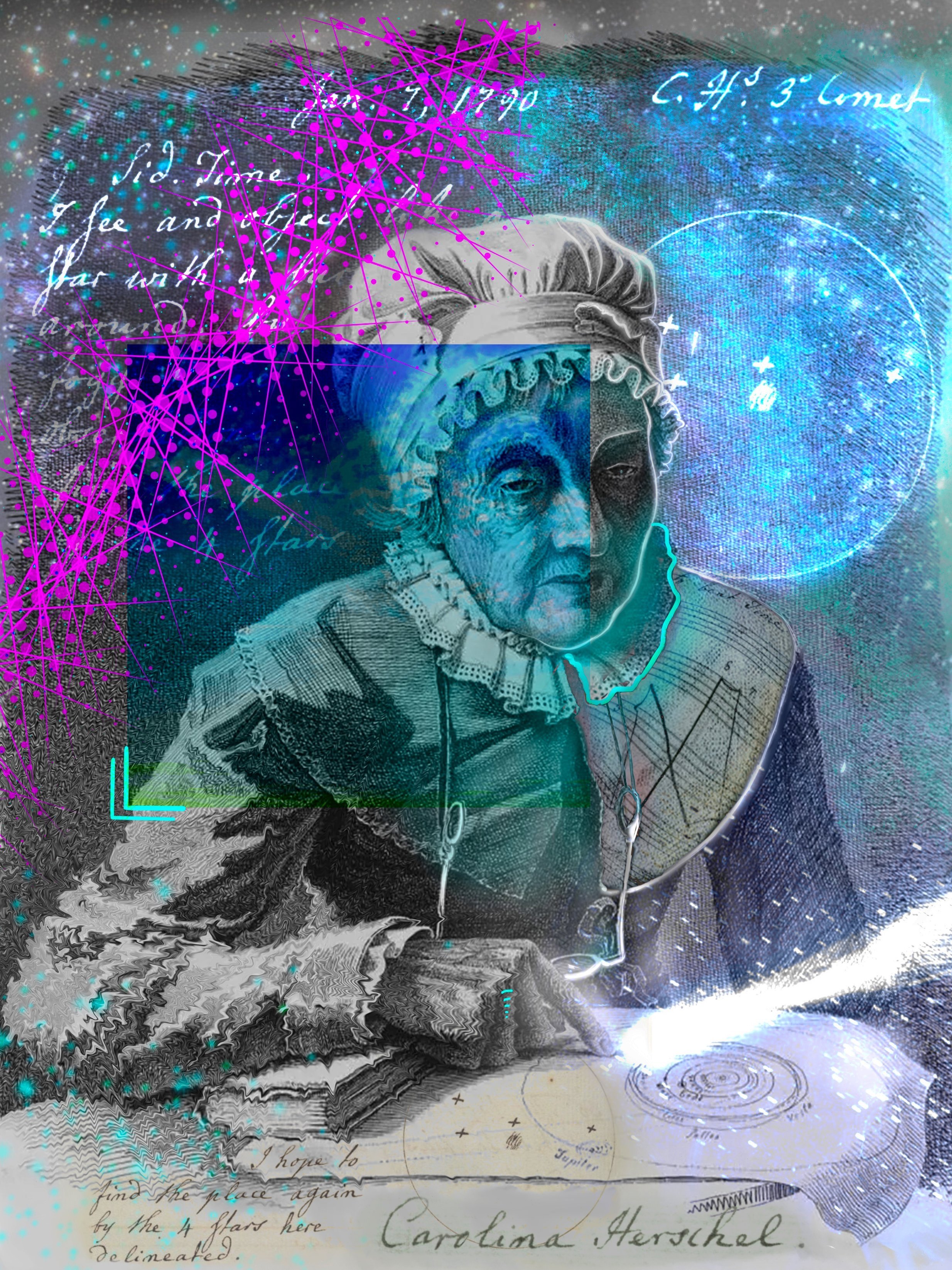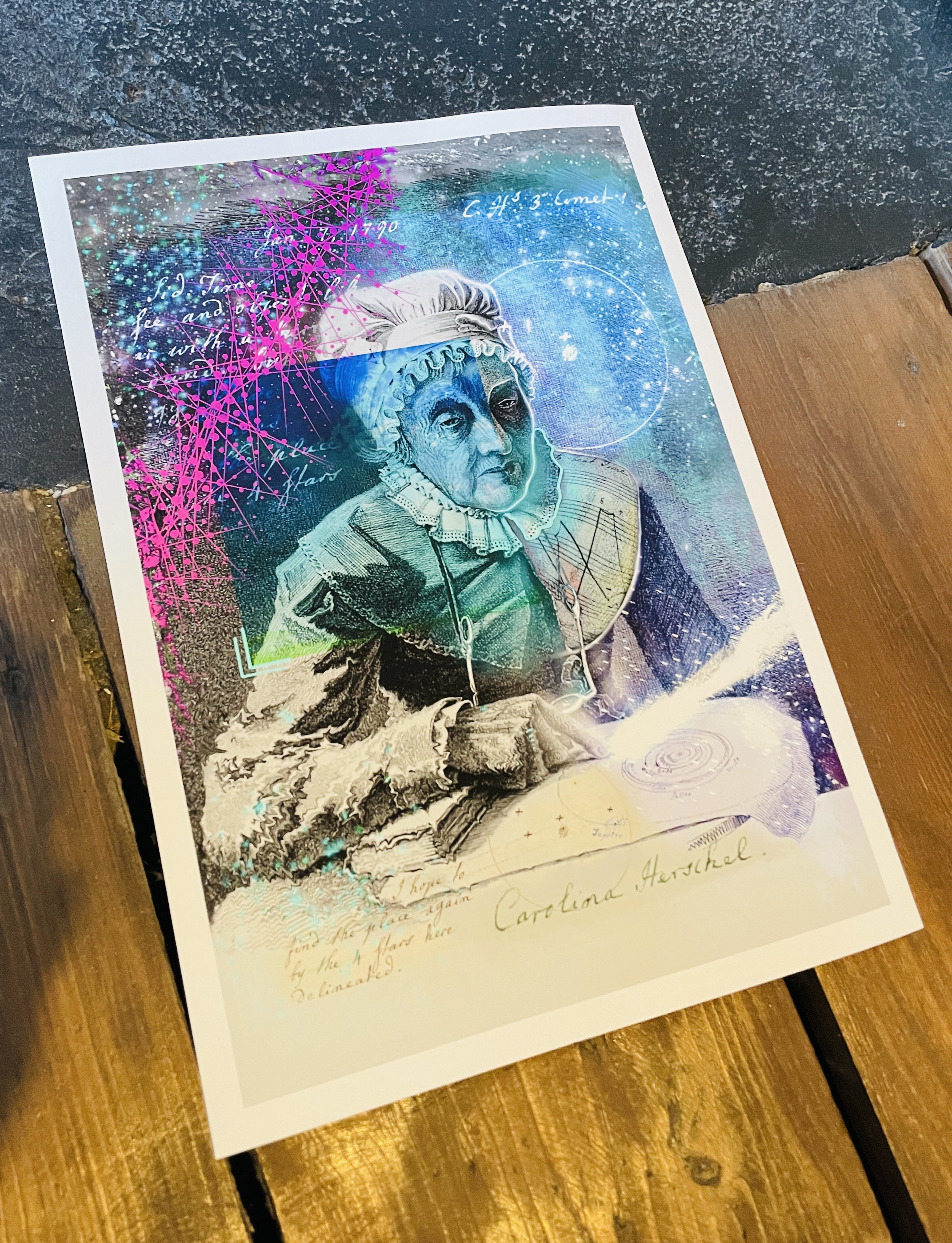Caroline


Caroline
A re-imagined portrait of Caroline Herschel.
Limited Giclee print.
Caroline Herschel was the first salaried female scientist on record and the first woman to hold a position in English government. She made independent astronomical discoveries including eight comets (1750 - 1848)
I shouldn’t really have a favourite, but as someone who studied physics and loves all kinds of music, I’ve always had a soft spot for Caroline Herschel as an astronomer and singer. Hers was the first portrait I worked on, as I really wanted to give some power back to her image, after reading so often how a childhood typhus illness left her too short and ‘ugly’ to be married, and so she was destined to become a house servant.
I’ve created this image from an engraving of her as an older woman (remarkably for the time she lived to 97). I wanted to give the impression of creating a new window through which we can view her, animated with her cosmic discoveries. Her signature is from her musical notebooks, and her conducting diagram is depicted on her clothing. This notebook is from the Hanover Royal Music Archive. James Marshall and Marie-Louise Osborn Collection, Beinecke Rare Book and Manuscript Library, Yale University.
Her astronomy notebooks are represented with her handwritten note and diagram of the location of a comet, from the Royal Astronomical Society archive. “I see and (sic) object like a star with a burr all around. But a very strong fogg prevents all farther observations. I hope to find the place again by the 4 stars here delineated.”
The background is subtly composed of a modern photographic image of her first discovery, star cluster NG2360, and landing at her fingertip is an image of her Comet C taken in 1908.
I’ve also illuminated her image a little from the light of her comet, and played with digital warping of her right arm, thinking about how many mirrors she would have polished and telescopes assembled to try to maximise incident light in astronomical observations and to avoid aberrations of the images.
